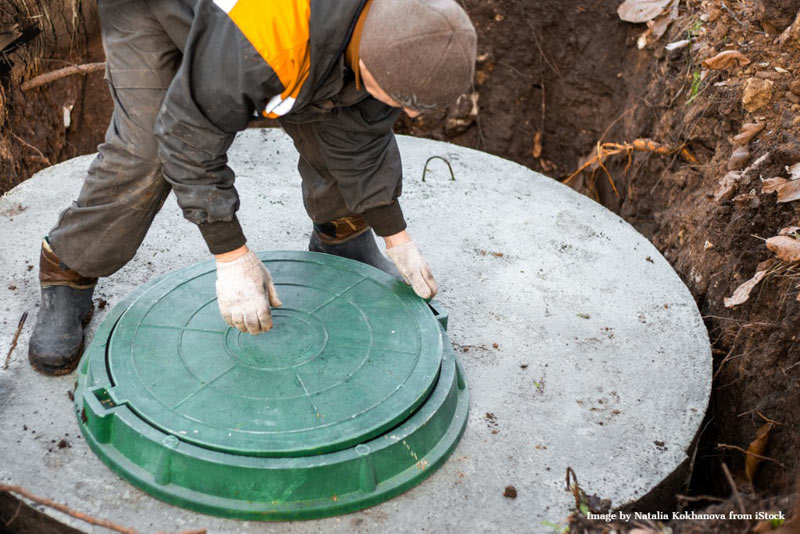How to Tell if You’re Dealing With a Clogged Pipe or a Septic System Problem
When your plumbing starts acting up, it can feel stressful and confusing. Is it just a clogged pipe, or is your septic system in trouble? The difference is important: while a clog might be a quick fix, septic issues can turn into costly and even hazardous problems if left untreated.
This guide will walk you through the main differences, what to look out for, and how to handle each situation. And if you’re in San Diego County or North County San Diego, Bob’s Septic Service is here with reliable plumbing repair and residential septic services to keep your home safe and functional.
Why Do Pipes Get Clogged?
Clogs are one of the most common plumbing headaches homeowners deal with. They can happen for a variety of everyday reasons:
- Grease and oil – Cooking fats that get rinsed down the sink harden inside your pipes.
- Hair and soap buildup – A frequent problem in showers, tubs, and bathroom sinks.
- Objects in the drain – Items like wipes, paper towels, or small objects can get lodged and block water flow.
- Hard water deposits – Mineral buildup can shrink the inside of pipes, slowing drainage.
Since clogged pipes are so common, most households will run into them sooner or later. The key is spotting the signs early so you can fix the issue before it causes bigger damage.
Signs of a Clogged Pipe
If you’re unsure whether the problem is a septic failure or a simple clog, check for these symptoms that usually point to a blocked pipe:
- Slow drainage in one or two sinks, tubs, or showers
- Gurgling or bubbling sounds when water flows through toilets or sinks
- Water backups in the same fixture
In most cases, a clogged pipe will only affect one area of your home. For example, if the kitchen sink won’t drain but everything else is working, you’re probably looking at a clog and not a septic system failure.
How Septic System Issues Show Up
Septic system problems tend to look a little different—and they usually affect the whole house instead of just one sink or tub. Watch for these red flags if you have a septic tank:
- Water pooling in the yard, especially around the septic tank or drain field
- Persistent sewage odors outside the home
- Several drains clogging at the same time
- Unusually green grass on the drain field due to leaking wastewater
Unlike clogs, septic issues won’t clear up with a plunger. If you notice these symptoms, the problem is likely deeper in your septic system and requires professional septic pumping or repair.
Which Is Worse: A Clog or a Septic Problem?
Both clogged pipes and septic problems are inconvenient, but they differ in severity.
- Clogs can often be resolved with basic tools:
- A plunger for toilets and sinksA drain snake (auger) for tougher blockages
- Enzyme drain treatments (safe for septic systems, unlike chemical cleaners)
- Septic problems, on the other hand, are much more serious. They can cause sewage backups inside your home, create strong odors outdoors, and even damage groundwater. Because septic tanks are complex, repairs and pumping should always be left to professionals.
DIY Fixes vs. Professional Help
- Clogged pipes: Homeowners often handle minor clogs on their own with a plunger or auger. But if the same fixture keeps clogging, or water starts backing up repeatedly, it’s time to call a plumber.
- Septic issues: These should never be DIY projects. Septic tanks require specialized equipment and training. Attempting to fix them yourself could create health hazards or make the problem worse.
At Bob’s Septic Service, we offer both plumbing repair and residential septic services in San Diego. Our licensed team can quickly identify the cause of the problem and provide the right solution.
How to Maintain a Healthy Septic System
Routine care helps prevent septic emergencies and extends the life of your system. Here are a few key tips:
- Pump the tank every 3–5 years (depending on household size and tank capacity).
- Schedule professional inspections every 1–3 years to catch problems early.
- Use water wisely—too much water at once can overload your system.
- Flush only toilet paper and human waste. Never put wipes, paper towels, or feminine hygiene products down the toilet.
- Limit harsh chemicals—bleach, antibacterial cleaners, and strong drain products can kill the beneficial bacteria your septic system relies on.
By sticking to a septic maintenance schedule, you’ll reduce the chances of costly repairs.
Why Quick Action Matters
Whether you’re dealing with a clog or a septic issue, waiting to fix it can make things much worse:
- Clogged pipes can burst or cause hidden leaks in walls.
- Septic failures can lead to sewage backing up into your home or yard.
- Both problems can result in water damage, mold, and serious health risks.
Calling a trusted professional at the first sign of trouble helps protect both your home and your wallet.
Residential Septic Services in San Diego County
At Bob’s Septic Service, we take pride in delivering honest, dependable service. With more than 40 years of combined experience, our team serves homeowners across San Diego County and North County with:
- Residential septic services
- Septic inspections
- Plumbing repair for clogged pipes
- Preventive septic maintenance programs
Contact Bob’s Septic Service Today
If you’ve noticed slow drains or water pooling near your septic tank, don’t wait for the problem to escalate. Whether you need quick plumbing repair or full septic pumping, Bob’s Septic Service is ready to help.
Call us today for an estimate and let our experienced team keep your home’s plumbing and septic system in top shape.

